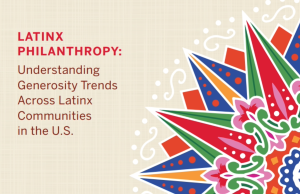Individual giving across Florida has been in decline the past decade, except for affluent counties in the southeast and southwest parts of the state, raising concerns about the sustainability of current giving levels as more giving has come from higher-income households.
“A Decade of Charitable Giving Trends,” a 28-page report by the Florida Nonprofit Alliance (FNA), examines how individuals changed their charitable donations from 2011 to 2018, providing an initial glimpse of how tax reform in 2017 might have affected giving. The report, sponsored by eight community foundations in Florida, mined Internal Revenue Service (IRS) data for individuals claiming tax deductions for charitable giving.
Of the 50 states and Washington, D.C., Florida was second best at maintaining the level of charitable giving in the face of tax law changes, down only 0.7% while the number of donors dropped by 59% between 2016 and 2018. The Tax Cuts and Jobs Act, which went into effect in 2018, doubled the standard deduction from about $12,000 to $24,000 for married couples, which drove the number of taxpayers itemizing from about a third of taxpayers to about 10% nationally.
Comparing 2018 to 2016, the number of Floridians who reported a charitable contribution dropped almost 60%, from more than 1.8 million in 2017 to about 750,000 in 2018. Though there were more than 1 million fewer donors reporting contributions in Florida, the amount of reported contributions remained essentially the same as in 2016 — about $13.5 billion.
“While individual giving in Florida overall remained relatively stable, giving across the state declined,” Mary Kress Littlepage of Jacksonville-based KBT & Associates, who prepared the report for FNA, said during a presentation to FNA members on Tuesday.
What’s not known is how many of the 1.1 million donors continued to make charitable contributions but did not report them because they no longer qualified for the charitable tax deduction.
“While Florida’s bottom line looks good, the numbers beneath it are cause for concern. As we think about giving in local communities, there are far more communities in Florida facing challenges than facing good times,” Littlepage said.
“Florida’s charitable giving stayed strong not because of a statewide trend, it stayed strong because in 10 counties giving was extraordinarily strong,” Littlepage said. “These big jumps in these 10 counties countered losses in other counties, which saw not only the number of donors decline but the amount of dollars given declined as well,” she said.
Together, the additional $995 million in charitable contributions from donors in these 10 counties was enough to almost offset the declines in the state’s other counties. Forty of the state’s 57 counties saw giving dropped at least 10% to as much as 55% between 2016 and 2018.
“It’s not that there’s just a relatively few donors, it’s that it’s clustered in pockets of the state,” Littlepage said, with Palm Beach, Miami-Dade, Broward and Collier counties accounting for 46% of all charitable gifts. More than one third of that money came from upper-income donors — 28,480 of them — in Palm Beach County alone.
Similar trends were seen in ultra-wealthy communities, such as San Mateo County in California and Westchester County in New York, where charitable contributions increased in 2018 over 2016 as the number of donors declined.
Historically, it’s not unusual to see southeast Florida dominate the state’s giving. A 1997 report, “Philanthropy In The Sunshine State,” found that 43% of all reported individual giving in the state came from the seven counties in the southeast (Monroe, Miami-Dade, Broward, Palm Beach, Martin, St. Lucie and Indian River), more than any other region in the state.
Not surprisingly, the source of giving also has shifted. The mix of donors has shifted, generally away from modest earners to wealthy earners with the middle cohort staying roughly the same. In 2011, one-third of all gifts came from the lower-income cohort (less than $100,000) and almost half from the upper-income cohort (more than $200,000); today, they represent 13% and almost 75% of gifts. Middle-income donors (between $100,000 and $200,000) have been crowded out, declining from 20% to 12% of gifts.
“While the tax law changes amplified these changes, it was pretty obvious the direction this was going, even before then,” Littlepage said.








